Welcome to Kushiro! Nestled on the eastern coast of Hokkaido, Japan’s second-largest island, lies the captivating city of Kushiro. Renowned for its untouched natural beauty, vibrant marshlands, and rich cultural heritage, Kushiro invites travelers with a blend of urban charm and breathtaking wilderness. This gem of Eastern Hokkaido, often overshadowed by the region’s more prominent cities, is an unspoiled retreat that beckons with an array of unforgettable experiences. Welcome to our detailed guide to Kushiro, where we’ll delve deep into the essence of this tranquil city and unveil its myriad secrets.
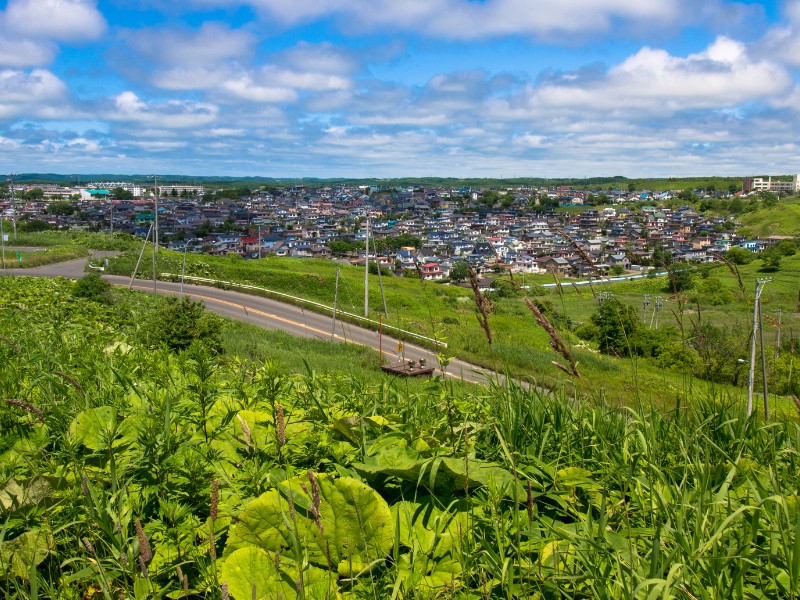
Natural Wonders
Perhaps the most iconic aspect of Kushiro is the sprawling Kushiro Wetland, the largest wetland in Japan. Spanning over 183 square kilometers, this vast expanse of marshland is a sanctuary for diverse flora and fauna. It is particularly famous for hosting the endangered Japanese red-crowned cranes, also known as Tancho. These elegant birds, with their distinctive red crowns, are not just a sight to behold but are deeply entrenched in Japanese folklore and culture, symbolizing longevity and good fortune.
In winter, the wetland transforms into a snowy paradise, where the cranes can be seen dancing gracefully against a pristine white backdrop. To truly appreciate the magnificence of this landscape, consider taking a ride on the Kushiro Wetland Norokko Train. The slow chug of the train allows for unhurried observation of the marshes and their inhabitants.
Beyond the marshes, the Lake Akan area mesmerizes visitors with its crystalline waters and the unique marimo (algae balls). These green, velvety balls are a rare natural phenomenon, found in only a few freshwater lakes worldwide.
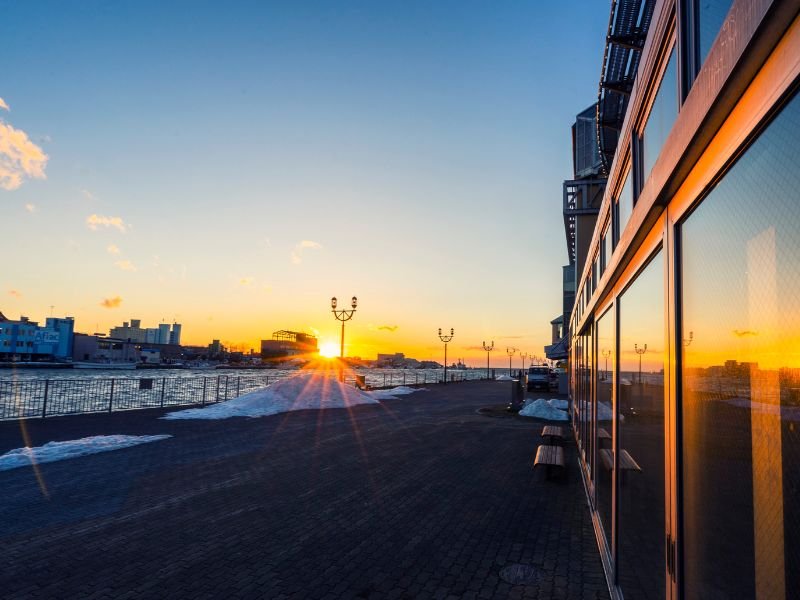
Urban Allure
Downtown Kushiro, while modest, is a vibrant blend of history and modernity. The Fisherman’s Wharf MOO, a popular spot, offers travelers an immersive experience with its seafood market, eateries, and artisan shops. Freshly caught seafood, especially the Pacific saury and sushi, is a must-try. The atmospheric Washo Market is another haven for seafood enthusiasts.
Reflecting its rich Ainu heritage, Kushiro has several establishments like the Ainu Kotan in Lake Akan, where one can learn about the indigenous Ainu culture, their crafts, dance, and music.
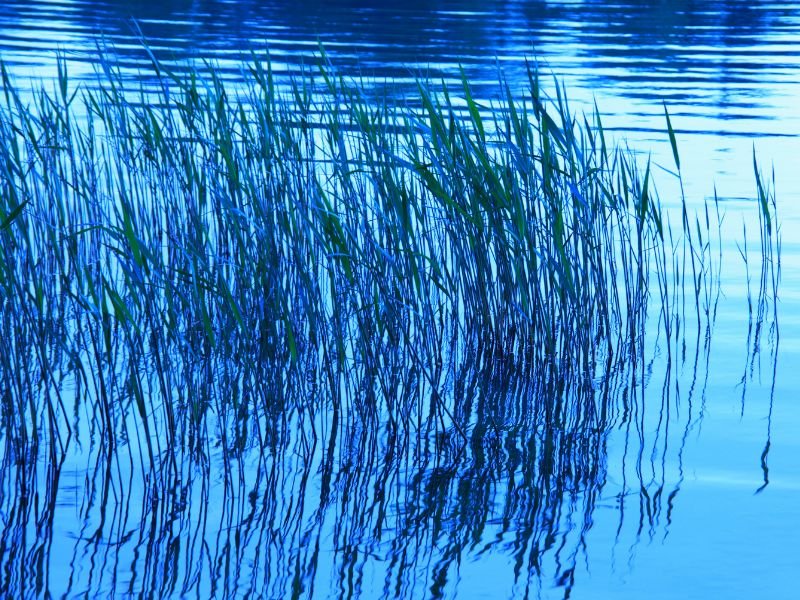
Adventures Await
For those with a penchant for adventure, Kushiro doesn’t disappoint. From canoeing in the serene marshes to ice fishing on the frozen waters of Lake Akan, the options are myriad. In winter, the snow-covered landscapes pave the way for activities like snowshoeing and cross-country skiing.
Kushiro is a treasure trove of experiences waiting to be discovered. Whether you’re a nature enthusiast, a culture aficionado, or someone looking for a serene escape, Kushiro has something to offer. As you venture further into this guide, you’ll find detailed insights into each attraction, along with insider tips to make the most of your journey to this enchanting city.
Welcome to Kushiro, where the heart of nature beats in harmony with cultural melodies!
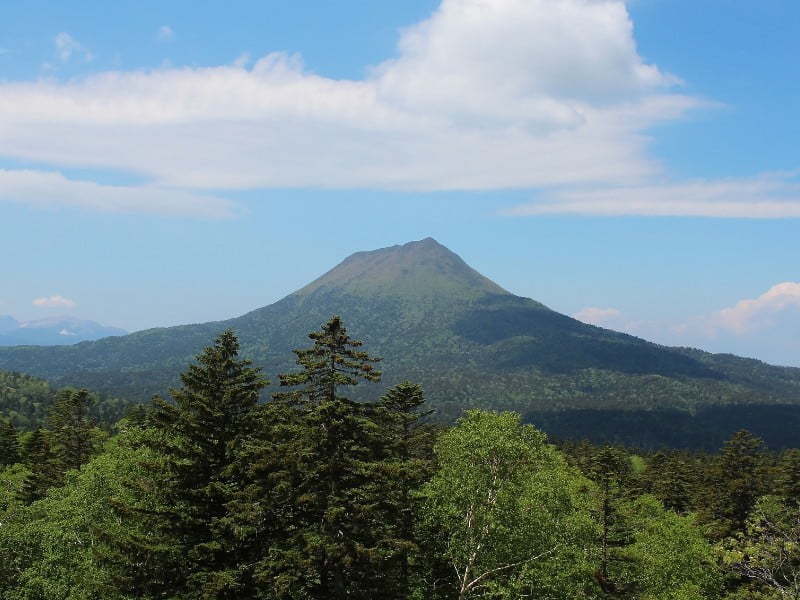
Kushiro City Guide: A Brief History Of Kushiro, Japan
Kushiro, located in the eastern part of Hokkaido, boasts a rich tapestry of history that has woven together the indigenous Ainu culture, early Japanese settlers, and the natural wonders that define its landscapes. This city, with its bustling port and serene wetlands, offers visitors a peek into a past that has shaped its present. Let’s take a journey back in time and explore the vibrant history of Kushiro.
Ancient Roots: The Ainu Civilization
Long before the Japanese began settling in Kushiro, the region was inhabited by the Ainu, the indigenous people of Hokkaido. The Ainu lived harmoniously with nature, respecting the mountains, rivers, and forests that provided them sustenance. They hunted, fished, and gathered, developing a unique culture centered around animism. Their folklore, filled with tales of gods in natural elements, showcases their deep reverence for the land.
Kushiro, with its abundance of resources, was a prominent Ainu settlement. The name ‘Kushiro’ itself is believed to be derived from the Ainu word ‘Kusuri,’ which means ‘place of marsh.’ Over the centuries, interactions between the Ainu and the Wajin (ethnic Japanese) increased, leading to a melding of cultures and traditions.
Japanese Settlement and Development
The Meiji Restoration in the late 19th century marked a significant turning point for Kushiro. The new Meiji government initiated a colonization project in Hokkaido, leading to a surge in Japanese migration to the island. Kushiro, with its potential as a port town and rich natural resources, was identified as a key development area.
In 1869, the first group of Japanese settlers arrived in Kushiro. They established infrastructure, developed the port, and tapped into the region’s coal and timber reserves. By 1900, Kushiro had evolved into a critical hub for maritime trade, especially for seafood.

The Birth of the Modern City
The 20th century saw rapid developments in Kushiro. As trade flourished, the city became a melting pot of cultures, with influences from the mainland and the indigenous Ainu. The establishment of the Kushiro Shimbun, the local newspaper, in 1942, further facilitated the spread of information and connected the city’s inhabitants.
However, this period wasn’t without challenges. Kushiro faced natural disasters, including the 1968 Tokachi earthquake. Despite the adversities, the city’s resilient spirit prevailed, rebuilding and adapting to changes.
Conservation Efforts
The 20th century also marked a growing awareness of the need to conserve Kushiro’s natural beauty. The vast Kushiro Wetlands, home to diverse flora and fauna, became a focal point for conservationists. In 1987, the wetland was designated a Ramsar Site (a wetland of international importance), acknowledging its ecological significance. The region’s endangered species, especially the Japanese red-crowned crane, also became a symbol of conservation efforts in Kushiro.
A Blend of Tradition and Modernity
Today, Kushiro stands as a testament to its layered history. The city seamlessly integrates the ancient traditions of the Ainu with modern Japanese influences. The bustling Fisherman’s Wharf, juxtaposed with the tranquil marshlands, embodies the city’s harmonious coexistence of urbanization and nature.
For visitors, understanding Kushiro’s history enhances the depth of their experience. As you wander through the city’s streets, visit its museums, and interact with its people, you’ll appreciate the centuries of stories and traditions that have shaped this remarkable destination.
source: Paddling Magazine on YouTube
Top 20 Things To Do in Kushiro, Japan For Visitors
Here are the top 20 things to do in Kushiro:
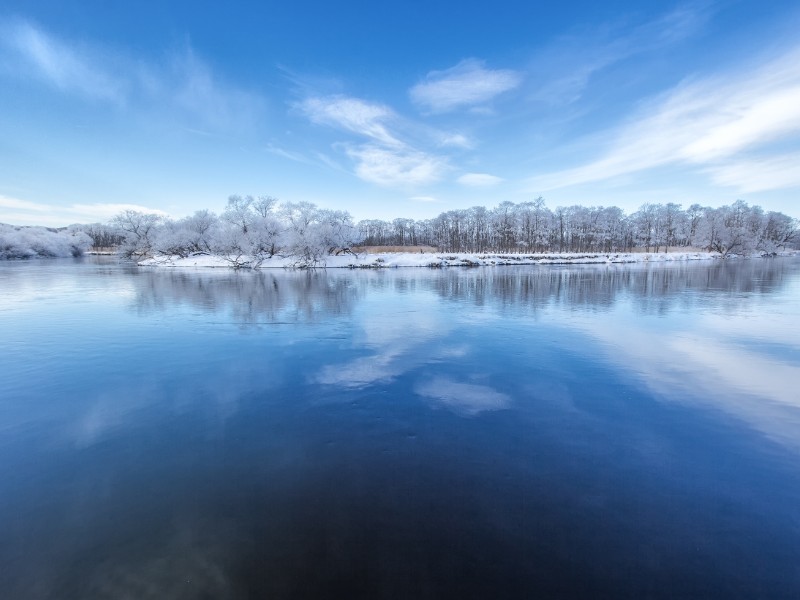
1. Explore Kushiro Shitsugen National Park
Kushiro Shitsugen National Park is Japan’s largest wetland and a paradise for nature lovers. Wander through the park on various walking trails, ascend observation decks, or embark on a serene boat tour. It’s an ideal spot for bird watching, especially to catch a glimpse of the iconic Japanese crane. The park’s vast, unspoiled landscapes offer a serene escape into nature.
- Birdwatcher’s haven: Spot the majestic Japanese crane in its natural habitat.
- Scenic trails: Explore the wetlands on foot for an immersive experience.
- Educational exhibits: Learn about the unique ecosystem of the wetlands.
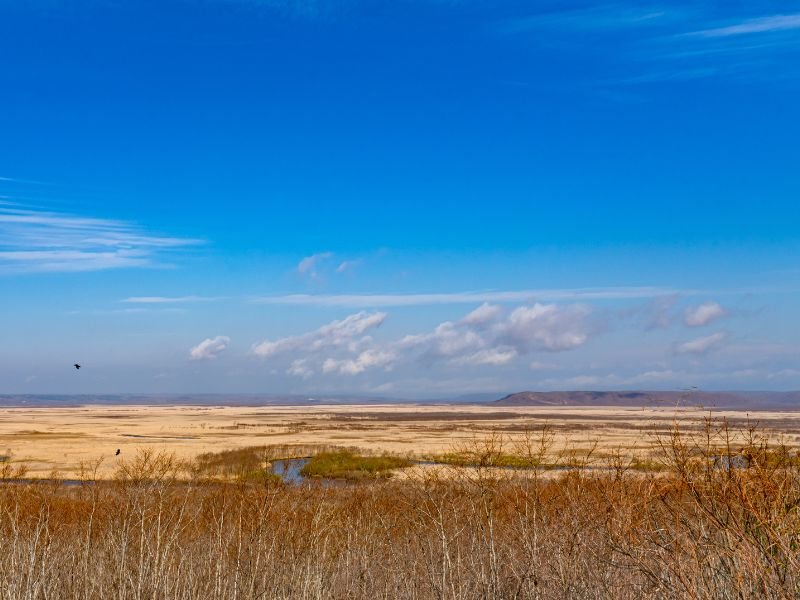
2. Enjoy a Canoe Tour on the Kushiro River
Canoeing on the Kushiro River offers a unique perspective of Kushiro’s stunning natural beauty. Glide through calm waters surrounded by lush forests and diverse wildlife. Guided tours are available, catering to all skill levels, including beginners. It’s a peaceful yet adventurous way to experience the area’s pristine environment.
- Tranquil adventure: Enjoy the serenity of nature while paddling downstream.
- Wildlife encounters: Keep an eye out for deer, foxes, and birds.
- Suitable for all: Guided tours make it accessible for novices and experts alike.
3. Visit the Kushiro City Marsh Observatory
The Kushiro City Marsh Observatory provides panoramic views of the Kushiro Wetlands. Inside, exhibits and interactive displays educate visitors about the wetland’s ecosystem and birdlife. Nature trails lead from the observatory into the wetlands for a closer look at the area’s natural beauty. It’s a must-visit for photographers and nature enthusiasts.
- Stunning vistas: Capture breathtaking views from the observatory deck.
- Interactive learning: Engage with displays about local flora and fauna.
- Nature trails: Venture into the wetlands for an up-close experience.
4. Stroll Around Kushiro Fisherman’s Wharf MOO
Kushiro Fisherman’s Wharf MOO is a waterfront complex offering shopping, dining, and entertainment. The market is a great place to sample fresh seafood, including Kushiro’s famous robatayaki (grilled seafood). The complex also hosts events and has facilities where visitors can learn about local marine life. Enjoy the sunset from the wharf for a memorable evening.
- Seafood delights: Indulge in the freshest catch of the day.
- Shopping spree: Browse through local crafts and souvenirs.
- Evening ambiance: Watch the sun set over the water for a picturesque end to the day.
5. Experience the Washo Market
Washo Market is known for its “Kattedon,” a local delicacy where you top a bowl of rice with your choice of fresh sashimi from market vendors. It’s a bustling market full of local color, flavors, and aromas. Besides seafood, the market offers a variety of Hokkaido specialties. It’s an ideal spot for food lovers looking to explore local cuisine.
- Customizable meals: Create your own seafood bowl with fresh ingredients.
- Local flavors: Taste a variety of Hokkaido’s culinary specialties.
- Vibrant atmosphere: Soak in the energetic vibes of a traditional market.
6. Visit the Kushiro Art Museum, Hokkaido
The Kushiro Art Museum, Hokkaido focuses on artworks depicting the natural beauty of Eastern Hokkaido. The museum’s collection includes paintings, photographs, and crafts. Special exhibitions are held regularly, featuring both local and international artists. The museum building itself is architecturally significant and offers views of Kushiro city.
- Cultural immersion: Discover art inspired by Hokkaido’s landscapes.
- Architectural gem: Appreciate the museum’s unique design.
- Rotating exhibits: Experience fresh perspectives with special exhibitions.
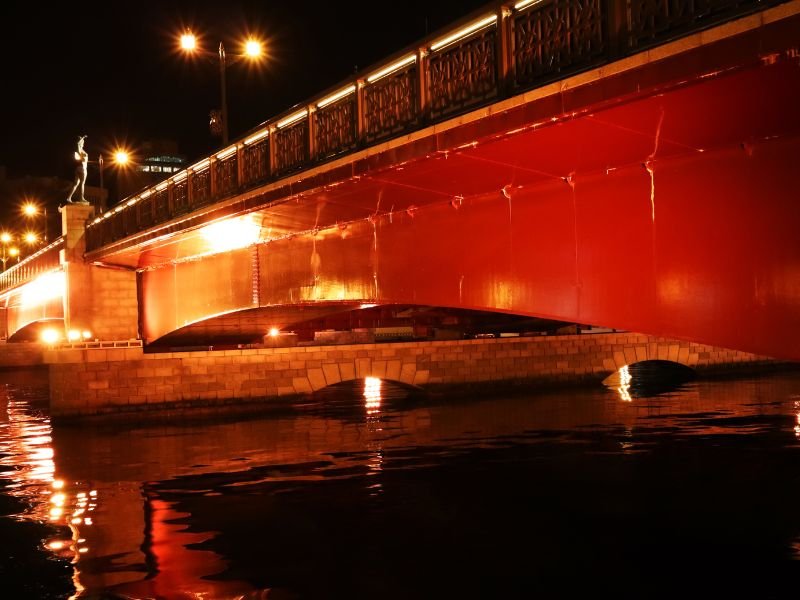
7. Take a Walk on the Nusamai Bridge
Nusamai Bridge is one of Kushiro’s landmarks, renowned for its beautiful sunset views over the Kushiro River. The bridge is adorned with statues representing the four seasons, created by renowned sculptors. It’s a popular spot for both locals and tourists, providing a picturesque setting for a leisurely walk. Don’t miss the chance to see the bridge lit up at night.
- Sunset spot: Witness breathtaking sunsets over the river.
- Artistic flair: Admire the seasonal statues along the bridge.
- Evening glow: Experience the enchanting nighttime illumination.
8. Explore the Tancho Kushiro Observatory
The Tancho Kushiro Observatory is dedicated to observing the Japanese crane, a symbol of longevity and luck. Located near feeding grounds, the observatory offers a chance to see these elegant birds up close, especially during winter. Educational programs about the cranes and conservation efforts are available. It’s an inspiring visit for wildlife enthusiasts.
- Up-close encounters: See Japanese cranes in their natural environment.
- Educational insight: Learn about conservation and crane behavior.
- Photographer’s dream: Capture stunning images of these majestic birds.
9. Relax at Lake Akan Onsen
Lake Akan Onsen is a hot spring resort area set by the beautiful Lake Akan. It’s known for its marimo, rare algae balls that form naturally in the lake. The area offers a range of accommodations, from traditional ryokans to modern hotels, many featuring hot spring baths with views of the lake. Outdoor activities like hiking, fishing, and boat tours are also popular here.
- Hot spring bliss: Soak in soothing onsen waters with scenic views.
- Unique nature: Discover the mysterious marimo algae.
- Outdoor adventures: Engage in hiking and boating around the lake.
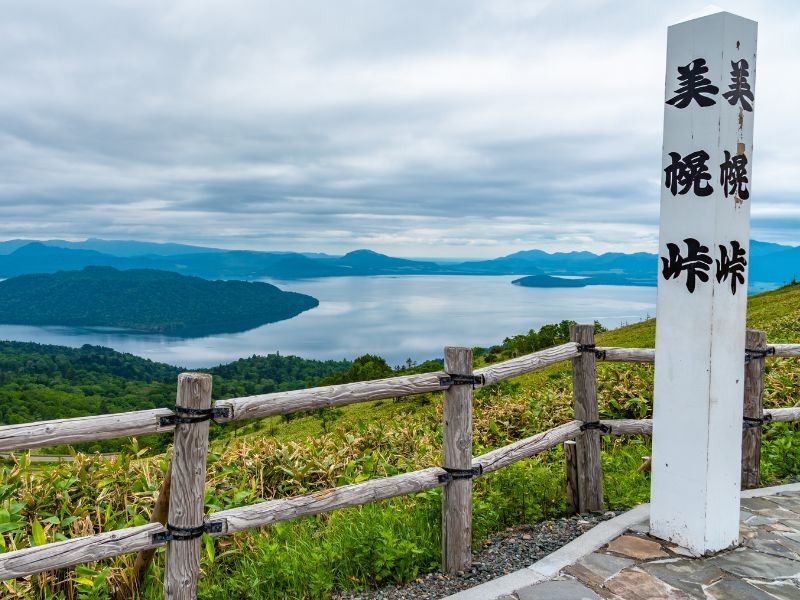
10. Discover the Akan Mashu National Park
Akan Mashu National Park is famed for its crystal-clear lakes, volcanic mountains, and lush forests. The park is home to Lake Mashu, one of the clearest lakes in the world, and Lake Akan, known for its marimo. Hiking trails offer breathtaking views and encounters with the park’s diverse flora and fauna. It’s an excellent destination for those seeking adventure and natural beauty.
- Scenic hiking: Traverse trails with stunning panoramic views.
- Volcanic landscapes: Explore unique geological formations.
- Wildlife watching: Spot native species in their natural habitats.
11. Visit the Kushiro Children’s Museum Kodomo Yugakukan
The Kushiro Children’s Museum Kodomo Yugakukan is a fun and educational destination for families. The museum offers interactive exhibits on science, art, and nature, designed to spark children’s curiosity. Workshops and events are held regularly, providing hands-on learning experiences. It’s a great place for children to play, learn, and explore.
- Interactive fun: Engage with exhibits that make learning enjoyable.
- Creative workshops: Participate in hands-on activities and crafts.
- Family-friendly: A perfect outing for kids and parents alike.
12. Experience Ice Fishing on Lake Akan
Lake Akan offers a unique winter activity: ice fishing for smelt. Visitors can enjoy fishing through holes in the frozen lake surface, with equipment and heated tents provided by local operators. It’s a fun and memorable experience, especially when you get to cook and eat your catch. The surrounding snowy landscape adds to the magical winter atmosphere.
- Winter adventure: Try your hand at ice fishing in a picturesque setting.
- Local tradition: Experience a beloved Hokkaido winter pastime.
- Fresh feast: Savor the taste of smelt cooked right on the ice.
13. Attend the Kushiro Winter Festival
The Kushiro Winter Festival is an annual event celebrating the season with ice sculptures, snow activities, and local food stalls. Highlights include the ice sculpture contest, where artists create stunning works of art from blocks of ice. The festival also features performances, workshops, and fireworks, making it enjoyable for all ages. It’s a great way to experience local culture and community spirit.
- Artistic marvels: Admire intricate ice sculptures crafted by talented artists.
- Festive activities: Participate in snow games and enjoy live performances.
- Culinary delights: Taste seasonal treats from various food stalls.
14. Enjoy Bird Watching at Lake Tōfutsu
Lake Tōfutsu is a Ramsar-designated wetland known for its abundant birdlife, including many migratory species. The lake’s observation facilities provide excellent opportunities for bird watching throughout the year. It’s particularly famous for its swan populations in the winter. Guided tours are available, offering insights into the area’s ecology and species.
- Ornithologist’s paradise: Spot a variety of bird species in their natural habitat.
- Seasonal sightings: Witness swans and migratory birds during peak times.
- Guided experiences: Enhance your visit with expert-led tours.
15. Hike in the Kushiro Marshlands
The Kushiro Marshlands offer several hiking trails that meander through the pristine wetland ecosystem. The trails range from easy walks to more challenging hikes, catering to all levels of outdoor enthusiasts. It’s an opportunity to immerse yourself in the tranquil beauty of the marshes and spot wildlife like deer, foxes, and various bird species. Guided tours provide valuable insights into the wetland’s ecological importance.
- Nature immersion: Experience the serenity of untouched wetlands.
- Wildlife encounters: Keep an eye out for local fauna along the trails.
- Varied trails: Choose a hike that suits your fitness and interest level.
16. Ski or Snowboard at Kushiro’s Ski Resorts
Kushiro’s surrounding areas offer several ski resorts, perfect for enjoying winter sports amidst beautiful landscapes. The resorts cater to all levels, from beginners to advanced skiers and snowboarders. Night skiing options extend the fun after sunset. It’s a great way to experience Japan’s renowned powder snow.
- Winter sports: Hit the slopes for skiing or snowboarding.
- Scenic runs: Enjoy breathtaking views as you glide down.
- Extended hours: Take advantage of night skiing opportunities.
17. Explore the Kushiro City Museum
The Kushiro City Museum focuses on the natural history, culture, and history of the Kushiro region. Exhibits include indigenous Ainu culture, local flora and fauna, and the development of Kushiro city. The museum’s architecture is inspired by the region’s natural features. It’s an enlightening visit for those looking to deepen their understanding of the area’s heritage.
- Cultural heritage: Learn about the indigenous Ainu people.
- Historical insights: Trace the evolution of Kushiro over the years.
- Architectural beauty: Appreciate the museum’s nature-inspired design.
18. Take a Scenic Ride on the Kushiro Shitsugen Norokko Train
The Kushiro Shitsugen Norokko Train offers a scenic journey through the heart of the Kushiro Shitsugen National Park. Featuring open-air cars, passengers can enjoy fresh air and stunning landscapes. It operates seasonally, providing a unique way to experience the beauty of the wetlands. The slow pace of the train is perfect for photography and wildlife spotting.
- Unique experience: Ride a vintage train through picturesque scenery.
- Open-air cars: Feel the breeze and connect with nature.
- Photo opportunities: Capture the beauty of the wetlands from the train.
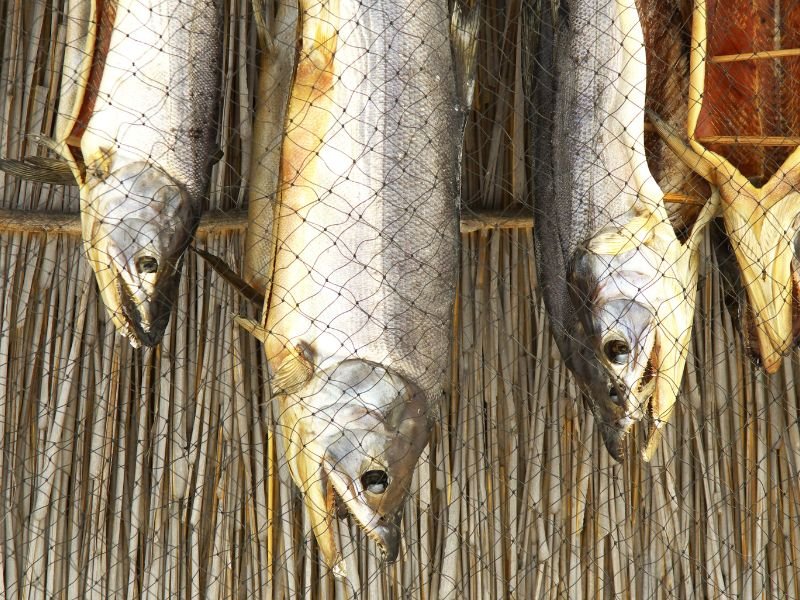
19. Sample Local Cuisine at Kushiro’s Restaurants
Kushiro’s culinary scene is as diverse as its landscapes, offering fresh seafood, local specialties, and Ainu cuisine. Highlights include Kushiro ramen, with its unique soy sauce-based broth, and grilled Atka mackerel. Many restaurants offer views of the Kushiro River or the Pacific Ocean, enhancing the dining experience. Don’t miss trying the local sake to complement your meal.
- Gastronomic delight: Taste authentic dishes unique to Kushiro.
- Seafood heaven: Enjoy the freshest catch from local waters.
- Scenic dining: Relish your meal with stunning waterfront views.
20. Participate in the Kushiro Shitsugen Marathon
The Kushiro Shitsugen Marathon is an annual event that takes runners through the beautiful landscapes of Kushiro Shitsugen National Park. Open to runners of all abilities, with full marathon, half-marathon, and shorter distance options. The event promotes environmental awareness and appreciation for the area’s natural beauty. Participating offers a unique and rewarding way to experience Kushiro’s outdoors.
- Active exploration: Combine fitness with sightseeing.
- Community spirit: Join locals and visitors in this celebrated event.
- Scenic course: Run amidst the stunning backdrop of the wetlands.
source: 5 AM Ramen on YouTube
What To Eat and Drink in Kushiro, Japan
Kushiro, a picturesque port city in eastern Hokkaido, not only enchants with its natural beauty but also tantalizes with a culinary landscape deeply influenced by its oceanic location and its unique cultural heritage. The city’s gastronomic offerings are a testament to the riches of its cold waters and the skills of the local artisans. Here’s a comprehensive guide on what to eat and drink when you find yourself in Kushiro.
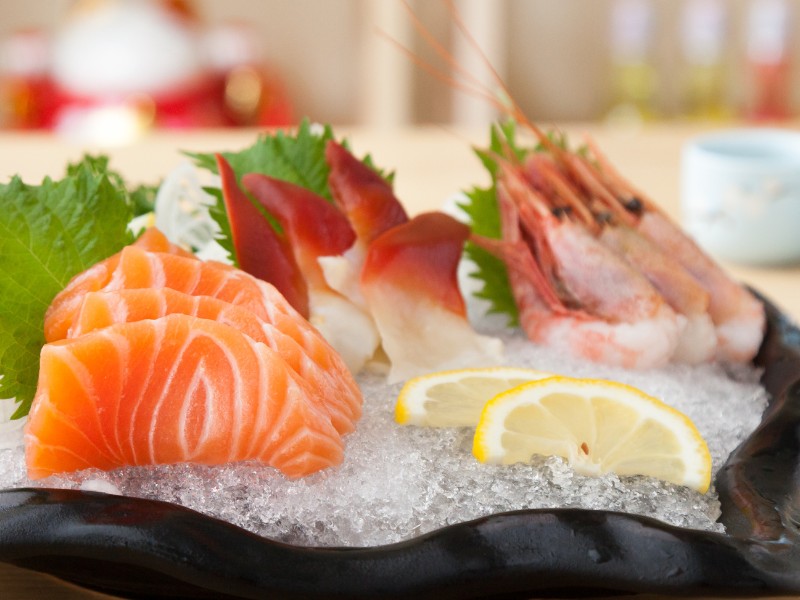
Seafood Delicacies
- Pacific Saury (Sanma): Kushiro takes pride in its Pacific saury, celebrated for its fatty and flavorsome meat. Enjoy it grilled, a traditional way of savoring this fish.
- Katte Don: A local favorite, Katte Don lets you choose your seafood toppings on a bowl of rice. Washo Market is the perfect place to try this, where you pick fresh seafood from different stalls to create your personalized Donbowl.
- Robatayaki: Experience seafood and vegetables grilled over hot charcoal in front of you. It’s not just a meal but a theatrical culinary experience.
- Sushi and Sashimi: Given its proximity to the ocean, Kushiro offers some of the freshest sushi and sashimi. Tuna, sea urchin, salmon, and scallops are among the must-tries.
Regional Specialties
- Zangi: Hokkaido’s take on fried chicken. Zangi is seasoned with a blend of spices, marinated, coated in a special batter, and deep-fried to perfection.
- Kushiro Ramen: While Hokkaido is famed for its Sapporo and Hakodate ramen, Kushiro has its unique style. It’s often soy sauce-based with a slightly wavy noodle.
Indigenous Ainu Cuisine
- Ohaw: A traditional Ainu fish soup, usually made with salmon and flavored with wild plants and herbs. This dish encapsulates the Ainu people’s harmonious relationship with nature.
- Cikap Oroshi: A dish made of grated salmon, typically served with millet rice.
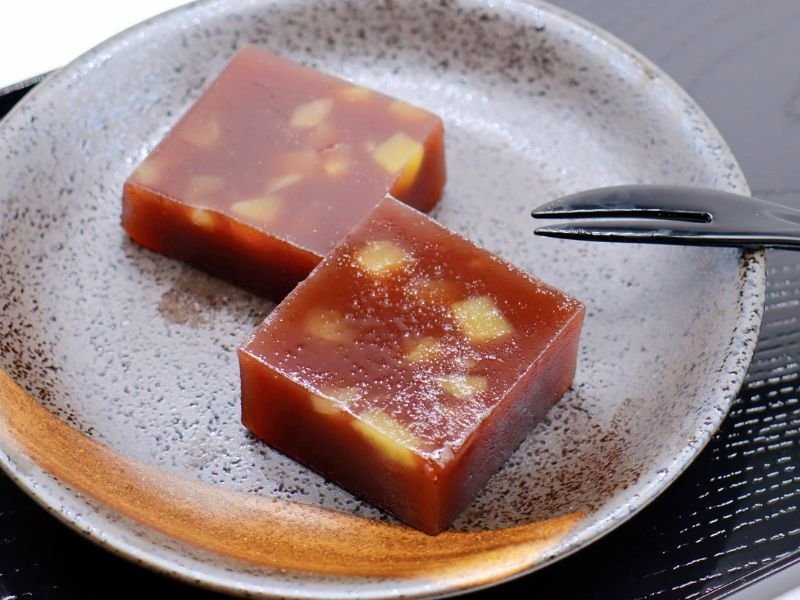
Desserts and Sweets
- Yokan: A sweet jelly dessert, typically made from red bean paste, agar, and sugar. In Kushiro, you might find variations infused with local ingredients.
- Soft Serve Ice Cream: Hokkaido is famed for its dairy, and you must try the local flavors of soft serve, including lavender and melon.
Beverages
- Local Sake: Kushiro, like many parts of Japan, produces its distinct variety of sake. Given the cold climate of Hokkaido, the sake here has a unique character. Don’t forget to visit a local brewery for a tasting session.
- Hokkaido Milk: Known for its creamy texture and rich flavor, don’t miss out on trying fresh milk or even a hot milk beverage when in town.
- Craft Beers: With the craft beer movement making its mark in Japan, Kushiro too has its local breweries offering a range of beers from lagers to stouts.
Cafés and Teahouses
- Green Tea and Matcha: While not unique to Kushiro, the experience of a traditional tea ceremony or just sipping on some high-quality matcha in a local teahouse is a must.
- Local Cafés: Explore local cafés that serve a mix of Western and Japanese pastries, often accompanied by a view of the serene landscapes of Kushiro.
Seasonal Specialties
Given the diverse seasons of Hokkaido, certain foods are best enjoyed during specific times of the year. For instance, winter brings about specialties like hot pot dishes, while summer might offer a range of melon-based desserts.
Kushiro’s cuisine is a delightful reflection of its rich maritime bounty, the ingenuity of its people, and the intertwining of traditional Japanese and indigenous Ainu cultures. Each dish tells a story, whether it’s the catch of the day from the Pacific waters or a traditional Ainu recipe passed down through generations. When in Kushiro, eat as the locals do, and you’ll be treated to a symphony of flavors that capture the essence of this beautiful city.

Tours For Visitors To Kushiro, Japan
Kushiro, an enchanting blend of natural beauty, cultural heritage, and a bustling port, offers an array of tour options that can cater to various tastes and preferences. Here’s a detailed exploration of some of the most compelling tours available for visitors to this vibrant city:
Kushiro Wetland National Park Tours:
- Overview: Discover the largest wetland in Japan, home to a unique ecosystem and various wildlife species, especially the endangered Japanese red-crowned cranes.
- Highlights: Bird-watching, nature trails, canoeing in the wetlands, and seasonal foliage views.
- Duration: Varies from half-day to full-day guided excursions.
Kushiro Harbor & Fisherman’s Wharf MOO Tours:
- Overview: Dive deep into Kushiro’s fishing culture, exploring its bustling fish market and observing the daily routines of local fishermen.
- Highlights: Tasting sessions of freshly caught seafood, interactive workshops, and souvenir shopping.
- Duration: Typically half-day tours.
Ainu Cultural Experience Tours:
- Overview: Step into the world of the Ainu, the indigenous people of Hokkaido, to learn about their rich history, customs, and traditions.
- Highlights: Ainu folk music performances, craft demonstrations, traditional storytelling, and a visit to the Ainu Kotan village.
- Duration: Half-day to full-day options.
Lake Akan Tours:
- Overview: Explore the volcanic Lake Akan, known for its unique marimo (algae balls) and stunning natural landscapes.
- Highlights: Boat cruises, marimo observatories, Ainu village visits, and hot springs.
- Duration: Typically a full-day excursion.
Kushiro River Canoeing:
- Overview: Paddle through the serene waters of the Kushiro River, surrounded by dense forests and the echoing sounds of nature.
- Highlights: Wildlife spotting, especially birds, and experiencing the tranquility of the Kushiro wetlands.
- Duration: Options range from a couple of hours to full-day adventures.
Kushiro Nightlife and Food Tours:
- Overview: Experience Kushiro’s nightlife by delving into local izakayas (Japanese pubs), bars, and eateries.
- Highlights: Tasting local delicacies like zangi and fresh seafood, accompanied by sake or regional drinks.
- Duration: Evening tours, lasting a few hours.
Historical and Architectural Walks:
- Overview: Navigate Kushiro’s streets to uncover its architectural gems and delve into its rich history.
- Highlights: Visits to old warehouses, historical buildings, and modern architectural marvels, with insights into their significance.
- Duration: Half-day walking tours.
Winter Wildlife Tours:
- Overview: Designed for the winter months, these tours focus on the unique wildlife active during Hokkaido’s colder months.
- Highlights: Spotting red-crowned cranes performing their courtship dance, observing other winter-active species, and enjoying snow-covered landscapes.
- Duration: Full-day excursions.
Onsen (Hot Spring) Tours:
- Overview: Relax and rejuvenate in some of Kushiro’s famed hot springs, many of which offer breathtaking views.
- Highlights: Soaking in mineral-rich waters, enjoying traditional ryokan hospitality, and savoring local cuisine.
- Duration: Typically overnight stays, though day-trip options are available.
Photography Tours:
- Overview: Guided by professionals, these tours lead you to the most picturesque spots in and around Kushiro.
- Highlights: Capturing the beauty of landscapes, wildlife, and cultural experiences with expert advice on techniques and angles.
- Duration: Varies from half-day to multi-day tours.

Kushiro Accommodations Guide: Hotels, Guesthouses and Hostels
The enchanting city of Kushiro, a vibrant meld of nature, culture, and urban life, offers a diverse range of accommodations suitable for every traveler and budget. Whether you’re seeking luxurious amenities, a cultural immersion, or budget-friendly options, Kushiro welcomes you with open arms. Here’s an exhaustive guide to help you find your ideal stay in the city:
Luxury Hotels:
- ANA Crowne Plaza Kushiro:
- Overview: Located in the heart of Kushiro, this upscale hotel combines comfort with elegance.
- Amenities: Fine dining restaurants, en-suite facilities, fitness center, and business services.
- Special Features: Rooms offering panoramic city views and close proximity to Kushiro Fisherman’s Wharf.
- La Vista Kushirogawa:
- Overview: A luxury hotel overlooking the Kushiro River, known for its hospitality and stunning views.
- Amenities: Onsen (hot springs), gourmet dining options, and plush interiors.
- Special Features: Traditional Japanese rooms with tatami mats and futons, along with modern suites.
Mid-Range Hotels:
- Comfort Hotel Kushiro:
- Overview: A modern hotel offering a balance between comfort and value.
- Amenities: Western-style rooms, complimentary breakfast, free Wi-Fi, and on-site laundry facilities.
- Special Features: Close proximity to Kushiro train station, making it convenient for travelers.
- Super Hotel Kushiro-Ekimae:
- Overview: A reliable chain hotel positioned for ease of access.
- Amenities: Compact yet comfortable rooms, breakfast service, and an in-house onsen.
- Special Features: Eco-friendly practices and localized breakfast options.
Guesthouses:
- Guest House The Earth:
- Overview: A cozy guesthouse that offers a more personalized and homey experience.
- Amenities: Shared kitchen, communal lounge, and both private rooms and dormitories.
- Special Features: A laid-back atmosphere with opportunities to interact with other travelers.
- Kushiro Guesthouse – Akimoya:
- Overview: A traditional Japanese house converted into a warm and welcoming guesthouse.
- Amenities: Shared facilities, a communal kitchen, and a cozy common area.
- Special Features: Traditional tatami rooms and futon bedding, offering an authentic Japanese stay experience.
Hostels:
- Kushiro Marsh Hostel:
- Overview: A budget-friendly option, perfect for backpackers and solo travelers.
- Amenities: Shared dormitory-style rooms, common lounge, kitchen facilities, and free Wi-Fi.
- Special Features: Friendly staff, a relaxed environment, and regular events for guests.
- Hostel TOMAR:
- Overview: Located in the heart of the city, this hostel combines affordability with convenience.
- Amenities: Clean dormitories, private family rooms, shared bathrooms, and a lounge area.
- Special Features: Artistic interiors with a touch of local culture, plus bike rentals for exploring the city.
Traditional Ryokans:
- Ryokan Onsen Yubae:
- Overview: Experience the traditional side of Japan with this classic ryokan.
- Amenities: On-site hot springs, traditional multi-course meals (kaiseki), and elegant tatami rooms.
- Special Features: Enchanting views of the Kushiro wetlands and personalized hospitality.
- Tsuruga Lake Akan Lodge:
- Overview: Located a bit outside Kushiro, near Lake Akan, this ryokan offers a nature-immersed experience.
- Amenities: Open-air onsen baths, traditional dining, and entertainment options like Ainu performances.
- Special Features: A blend of modern and traditional aesthetics overlooking the beautiful lake.
Kushiro’s accommodations reflect the city’s diverse appeal, catering to luxury seekers, culture enthusiasts, and budget travelers alike. It’s essential to consider the purpose of your visit and what you want from your stay while choosing an accommodation option. Whether it’s the modern comforts of a hotel, the authenticity of a ryokan, or the camaraderie of a hostel, Kushiro ensures a memorable stay for every visitor. Always remember to book in advance, especially during peak seasons, to secure the best deals and avoid last-minute hassles.
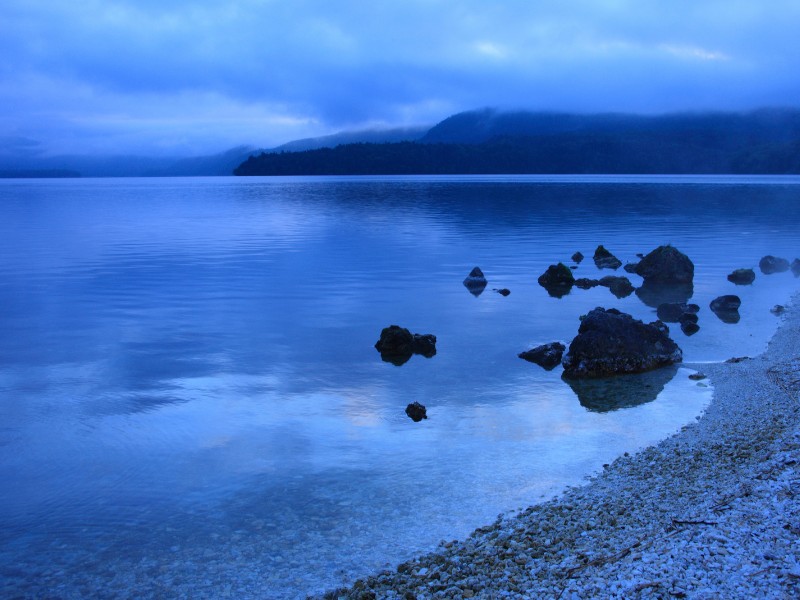
Day Trips From Kushiro, Japan
Kushiro, with its prime location in eastern Hokkaido, acts as an ideal base to embark on numerous day trips that allow visitors to immerse themselves in the splendors of Hokkaido’s nature, culture, and history. Here’s an extensive guide to day trips you can undertake from this vibrant city:
Lake Akan:
- Overview: Approximately a 90-minute drive from Kushiro, Lake Akan is a volcanic lake renowned for its unique marimo (algae balls) and mesmerizing natural beauty.
- Highlights:
- Marimo Exhibition and Observation Center: Learn about the mysterious marimo and view them up close.
- Ainu Kotan: A small Ainu village where visitors can experience Ainu culture, shop for traditional crafts, and watch captivating dance performances.
- Boat Cruises: Navigate the crystalline waters of the lake and soak in the scenic views.
Lake Mashu & Lake Kussharo:
- Overview: Two of Hokkaido’s most spectacular caldera lakes, offering breathtaking views and unique geological features.
- Highlights:
- Lake Mashu Observation Decks: Offers panoramic views of one of the clearest lakes in the world.
- Lake Kussharo Sand Bath: Relax in the naturally heated sands due to the area’s geothermal activity.
- Wakoto Peninsula: A scenic spot on Lake Kussharo with hiking trails and hot spring sources.
Tsurui Village:
- Overview: About a 40-minute drive from Kushiro, this village is the haven for the Japanese red-crowned crane, especially during winter months.
- Highlights:
- Otowa Bridge: A prime location for viewing and photographing the majestic cranes.
- Tsurui Ito Tancho Sanctuary: Observe the cranes in their natural habitat and learn about conservation efforts.
Shiretoko Peninsula (Shiretoko National Park):
- Overview: Recognized as a UNESCO World Heritage Site, Shiretoko offers raw, unspoiled nature. It’s a slightly longer day trip but well worth the effort.
- Highlights:
- Five Lakes: A series of lakes offering serene views and walking trails.
- Shiretoko Pass: Enjoy panoramic vistas of the peninsula and, on clear days, Kunashir Island of Russia.
- Boat Tours: Explore the rugged coastline and possibly spot wildlife like bears, foxes, and various sea creatures.
Nemuro Peninsula:
- Overview: A lesser-known gem, the Nemuro Peninsula, tantalizes visitors with its wild landscapes and birdwatching opportunities.
- Highlights:
- Nosappu Cape: The easternmost point of Japan, where you can view the disputed Habomai Islands on a clear day.
- Birdwatching: Spot various seabirds, especially in the Notsuke Peninsula and Cape Nosappu areas.
- Local Seafood: Relish fresh catches of the day at local eateries.
Rausu & Mount Rausu:
- Overview: Rausu is a serene fishing town on the Shiretoko Peninsula, and Mount Rausu is the tallest peak in Shiretoko.
- Highlights:
- Mount Rausu Trekking: For the adventurous souls, a trek up the mountain provides unmatched views of the surrounding landscapes.
- Onsen Experiences: Relax in one of Rausu’s onsens with mountain or ocean views.
- Whale Watching Tours (seasonal): Spot various species of whales and other marine life during the summer months.
Bihoro Pass:
- Overview: A stunning vantage point that offers panoramic views of Lake Kussharo and the surrounding areas.
- Highlights:
- Observation Deck: Witness the grandeur of nature from the deck, especially mesmerizing during sunrise and sunset.
- Nature Trails: Wander around the vicinity for a closer connection with nature.
Otanoshike Flower Park:
- Overview: Located approximately 30 minutes from Kushiro, Otanoshike Flower Park is a visual treat, especially during spring and summer.
- Highlights:
- Colorful Blooms: Witness vast fields of flowers, including tulips, lavender, and sunflowers.
- Walking Trails: Meander through the park to enjoy the various thematic gardens and scenic spots.
Akan International Crane Center:
- Overview: A hub for research and conservation of the iconic red-crowned crane.
- Highlights:
- Exhibits and Galleries: Delve into the world of cranes, their history, and conservation efforts.
- Observation Areas: Watch these elegant birds in naturalistic habitats.
Akankohan Eco Museum Center:
- Overview: This museum provides insightful knowledge about the Akan region’s ecosystem.
- Highlights:
- Interactive Displays: Learn about the unique ecology of the region.
- Guided Tours: Avail of guided tours that delve deeper into the local flora, fauna, and geology.
Kottaro Marshland:
- Overview: A serene wetland area that offers beautiful landscapes and a peaceful atmosphere.
- Highlights:
- Nature Trails: Wander around and enjoy the tranquility of the marshland.
- Wildlife Spotting: Look out for birds and small animals that call this wetland home.
Hosooka Observation Deck:
- Overview: An excellent viewpoint to observe the sprawling beauty of the Kushiro Marshland.
- Highlights:
- Panoramic Views: Witness the largest wetland in Japan from an elevated perspective.
- Photography: A haven for photographers, especially during sunrise and sunset.
Kushiro City Zoo:
- Overview: Located in Yamahana Park, this is one of the largest zoos in eastern Hokkaido.
- Highlights:
- Diverse Animal Exhibits: Home to over 450 animals from 60 different species, including native species to Hokkaido.
- Children’s Petting Zoo: A space where children can interact with smaller and gentler animals.
Onneto Hot Falls:
- Overview: A unique hot waterfall located in the Akan Mashu National Park.
- Highlights:
- Thermal Springs: Watch as the hot water cascades, releasing steam, especially notable during cooler days.
- Surrounding Nature: The falls are surrounded by lush forestation, offering a relaxing ambiance.
Taiho Sumo Memorial Hall:
- Overview: A tribute to the legendary sumo wrestler, Taiho Koki, who hailed from Hokkaido.
- Highlights:
- Exhibits: Explore the life and achievements of Taiho through memorabilia, photographs, and personal items.
- Interactive Displays: Experience the world of sumo wrestling with hands-on exhibits.
Each day trip from Kushiro opens a new chapter of Hokkaido’s rich tapestry, be it through its diverse ecosystems, cultural heritage, or raw natural beauty. While Kushiro itself is a treasure trove of experiences, the nearby areas accentuate the charm of eastern Hokkaido, making them worth the journey. Always ensure to check the local transportation schedules or consider renting a car for maximum flexibility and convenience.
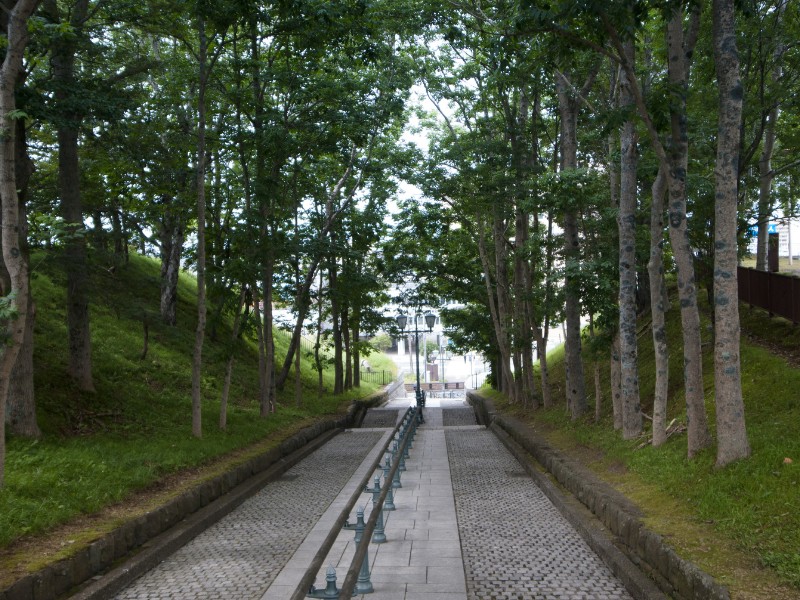
Kushiro Transportation Guide
Ensuring a smooth journey within and around Kushiro requires knowledge of its transportation network. Here’s an in-depth guide to help you navigate this captivating city.
Arriving in Kushiro:
- Kushiro Airport:
- Overview: Located about 27 km west of central Kushiro, Kushiro Airport is the primary gateway for travelers coming by air.
- Services: Domestic flights from major Japanese cities, including Tokyo, Osaka, and Sapporo.
- Transit to City Center: Buses run regularly between the airport and the city center, taking approximately 45 minutes. Taxis are also available but are more costly.
Railways:
- Kushiro Station:
- Overview: The central railway hub in the city, connecting Kushiro to other parts of Hokkaido.
- Services: The Super Ozora Limited Express connects Kushiro to Sapporo in about 4 hours. There are also local trains connecting to nearby towns and tourist spots.
- Facilities: Tourist Information Center, lockers, eateries, and ticket machines.
Buses:
- Akan Bus:
- Overview: The primary bus company serving the Kushiro region, offering routes within the city and to nearby attractions.
- Popular Routes: City loops, as well as routes to Lake Akan, Lake Mashu, and other popular destinations.
- Tips: Daily passes or multi-ride tickets may offer savings for those planning extensive bus travel.
Taxis:
- Overview: Taxis are plentiful in Kushiro and can be hailed on the streets, found at taxi ranks, or booked in advance.
- Advantages: Ideal for short distances, early morning or late-night travel, or for those with heavy luggage.
- Tips: While most taxi drivers may not speak fluent English, many taxis are equipped with GPS. Having your destination’s address or a map can be helpful.
Car Rentals:
- Overview: Renting a car offers the freedom to explore Kushiro and its surroundings at your own pace.
- Providers: Major car rental companies like Toyota Rent-a-Car, Nippon Rent-a-Car, and Orix Rent-a-Car operate in Kushiro.
- Tips: Ensure you have an International Driving Permit if you’re a foreigner. Familiarize yourself with Japanese road rules and always carry a reliable GPS or map.
Cycling:
- Overview: Kushiro is relatively flat, making cycling a convenient mode of transportation, especially during warmer months.
- Rentals: Many hotels and tourist information centers offer bike rentals, both regular and electric-assist.
- Popular Routes: Riding along the Kushiro River or exploring the Kushiro Wetland areas.
Walking:
- Overview: Many of Kushiro’s attractions, especially within the city center, are within walking distance.
- Advantages: It’s free, environmentally friendly, and offers the chance to discover hidden gems.
- Tips: Wear comfortable footwear, and always have a map or navigation app on hand.
Ferries and Boat Cruises:
- Overview: Given its coastal location, boat services offer a unique perspective of Kushiro.
- Services: Regular ferry services connect to nearby islands. Additionally, sightseeing cruises navigate the Kushiro River and its marshlands.
- Tips: Boat services may be seasonal, so it’s essential to check schedules and book in advance.
Kushiro Transportation Passes:
- Overview: For those planning extensive travel, various transportation passes offer unlimited rides and discounts.
- Akan Mashu National Park Pass: Offers unlimited rides on Akan buses for specific routes, making it ideal for nature enthusiasts.
Kushiro’s comprehensive transportation network ensures that visitors can comfortably and efficiently explore its myriad attractions. Whether you’re traversing vast wetlands, navigating bustling city streets, or venturing to nearby scenic spots, this guide aims to assist in making your journey seamless and enjoyable. Always plan ahead, especially during peak seasons, and embrace the adventure that awaits in Kushiro!

Kushiro 1 Day Travel Itinerary
Kushiro, with its harmonious blend of urban modernity and breathtaking nature, is a city where even a day’s exploration can offer a wealth of experiences. Here’s a detailed itinerary to make the most of 24 hours in this splendid part of Hokkaido.
Morning:
8:00 AM – Breakfast at a Local Café:
- Nemuro Hanamaru Kushiroten: Located near Kushiro Station, it’s a great spot to savor a seafood breakfast. Try their rice bowls topped with fresh seafood!
9:00 AM – Kushiro Marsh Observatory:
- Overview: A short distance from the city center, the observatory provides panoramic views of Japan’s largest wetland.
- Activities: Take the elevator to the observation deck. From here, soak in the expansive view of the marsh and, if you’re lucky, spot some local wildlife like the iconic red-crowned crane.
10:30 AM – Kushiro City Museum:
- Overview: Delve into Kushiro’s history, culture, and environment.
- Highlights: Engage with interactive exhibits, dioramas, and displays on local flora and fauna.
Late Morning & Early Afternoon:
12:00 PM – Lunch at Washo Ichiba Market:
- Overview: A vibrant seafood market known for its fresh produce.
- Activities: Customize your seafood bowl (kaisendon) by purchasing various seafood items from different stalls and assembling them atop a bowl of steamed rice.
1:30 PM – Kushiro Fisherman’s Wharf MOO:
- Overview: A waterfront complex with shopping, dining, and cultural spaces.
- Activities: Stroll along the pier, shop for local crafts, and visit the Kushiro Art Museum within the complex.
Afternoon:
3:00 PM – Kushiro Zoo:
- Overview: Located in Yamahana Park, it’s one of eastern Hokkaido’s most extensive zoological gardens.
- Activities: Observe over 450 animals from 60 species, stroll through the park, and enjoy animal shows and feeding sessions.
5:00 PM – Nusamai Bridge and Riverside Stroll:
- Overview: This iconic bridge is known for its four statues representing the seasons.
- Activities: Take in the views, click some photos, and stroll along the riverbanks, witnessing locals going about their day.
Evening:
7:00 PM – Dinner at Robata:
- Overview: Robata is a traditional Japanese hearth or fireside cooking style, and Kushiro is famous for it.
- Recommendation: Robata Yezo offers a rustic atmosphere with fresh seafood and local delicacies grilled in front of you.
9:00 PM – Nightlife at Sakurazaka Street:
- Overview: Kushiro’s main entertainment district.
- Activities: Experience the local nightlife, hop into an izakaya (Japanese pub) or karaoke bar, and mingle with locals. If nightlife isn’t your thing, consider a relaxing evening at a local onsen (hot spring) hotel.
Late Night:
11:00 PM – Kushiro Night View from Mt. Hakuto Observatory:
- Overview: A short drive up, this vantage point offers a sweeping view of the city lights.
- Activities: Reflect on your day while taking in the serene nighttime panorama.
Pro Tips:
- Flexible Schedule: Always allocate some free time between activities for unexpected discoveries or to simply soak in the atmosphere.
- Public Transport: Opt for a day pass if available, especially if you’ll be traveling a lot within the city.
- Weather-Appropriate Clothing: Especially if you’re venturing into natural areas or viewpoints.
- Reservations: For popular eateries or activities, consider booking in advance.
From vibrant marketplaces and modern complexes to breathtaking observatories and traditional dining experiences, this itinerary encapsulates the diverse allure of Kushiro. A day might feel rushed, but it provides a compelling snapshot of the city’s essence, making you yearn for a return visit!

Kushiro 3-4 Days Travel Itinerary
Spanning 3-4 days in Kushiro allows a traveler to immerse more deeply in its natural beauty, cultural landmarks, and mouthwatering cuisine. Here’s a comprehensive itinerary to make the most of your time.
Day 1: Introduction to Kushiro
Morning:
- 8:00 AM: Breakfast at Café Terrace Muge near Kushiro Station, renowned for its hearty breakfast sets and aromatic coffee.
- 9:00 AM: Visit Kushiro Marsh Observatory.
- Enjoy the scenic wetlands and spot local wildlife. Consider taking a guided tour if available.
Late Morning:
- 11:00 AM: Dive into history at Kushiro City Museum.
- Explore exhibits on local traditions, wildlife, and the city’s evolution.
Afternoon:
- 1:00 PM: Lunch at Washo Ichiba Market.
- Savor a freshly prepared kaisendon.
- 2:30 PM: Relax and shop at Kushiro Fisherman’s Wharf MOO.
- 4:00 PM: Riverside stroll by Nusamai Bridge.
Evening:
- 7:00 PM: Dine at Robata Yezo for an authentic Robata experience.
- 9:00 PM: Explore Sakurazaka Street or take a leisurely onsen bath at a local ryokan.
Day 2: Natural Wonders and Wildlife
Morning:
- 8:00 AM: Quick breakfast at your accommodation.
- 9:00 AM: Head to Lake Akan.
- Experience the lake’s grandeur, the mysterious Marimo algae, and the quaint Ainu Kotan village.
Afternoon:
- 1:00 PM: Lunch at a lakeside restaurant.
- 2:30 PM: Visit Akan International Crane Center.
- Discover the red-crowned cranes, their significance, and conservation efforts.
- 4:30 PM: Explore Tsuru-Midori.
- A wonderful facility where you can get close to birds and nature.
Evening:
- 7:00 PM: Return to Kushiro. Dine at Sushi Restaurant Kuroshio for some of the freshest sushi in town.
Day 3: Coastal Charms and Local Delights
Morning:
- 8:00 AM: Breakfast at Patisserie Ripple. Try their pastries and cakes!
- 9:30 AM: Visit Kushiro Shitsugen National Park.
- Engage in activities like canoeing or walking on nature trails.
Afternoon:
- 12:30 PM: Head to Harutori Lake for lunch at a lakeside eatery.
- 2:00 PM: Explore Otanoshike Flower Park.
- Bask in its vibrant floral displays.
- 4:00 PM: Visit the Kushiro Art Museum.
- Dive into regional artistic expressions.
Evening:
- 7:00 PM: Experience Kushiro’s nightlife deeper with a pub crawl on Sakurazaka Street.
Day 4: Leisure and Goodbyes
Morning:
- 8:00 AM: Breakfast at your accommodation.
- 9:00 AM: Shopping spree at Sun Mall Kuroshio.
- Pick up souvenirs and unique local products.
Late Morning:
- 11:00 AM: Head to Kushiro Port.
- Enjoy a leisurely boat ride or fish at the pier.
Afternoon:
- 1:00 PM: Last lunch in Kushiro. Try Gyoza no Osho Kushiro Station Mae for its famous gyoza.
- 3:00 PM: Relax at Kushiro City Library or take a walk through the city one last time.
Evening:
- 6:00 PM: Farewell dinner at Kushiro Izakaya Tsukinoya. Reflect on your journey with local delicacies.
Pro Tips:
- Transport: Rent a car if you’re comfortable, as some attractions can be far apart.
- Weather: Pack accordingly, especially if you’re venturing into natural areas.
- Reservations: Ensure bookings for popular spots to avoid waiting.
This 3-4 days itinerary promises an enriching journey, blending Kushiro’s urban charm with its unmatched natural beauty. By the end, you’d have experienced the heart of this delightful city, leaving with memories to cherish forever.
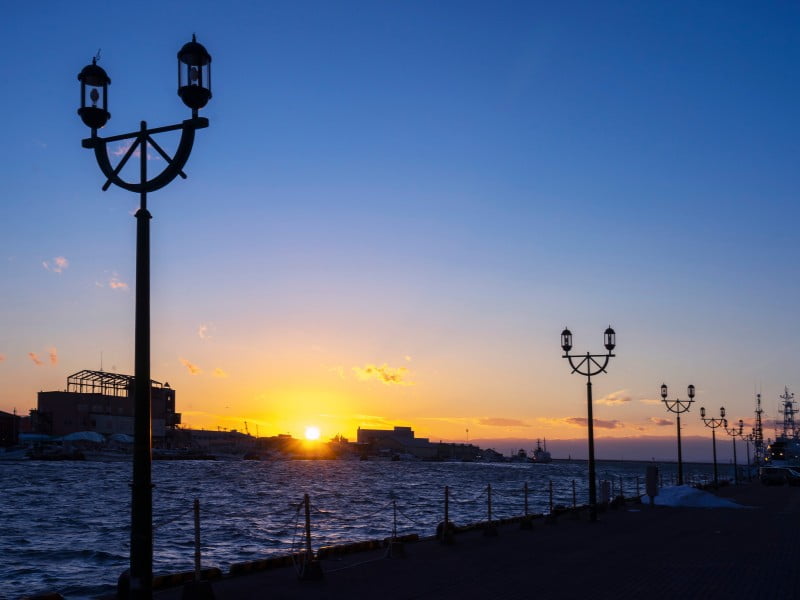
Is Kushiro A Safe City To Visit?
Kushiro, located in Hokkaido, the northernmost island of Japan, is generally regarded as a safe city for tourists, like much of Japan. The country prides itself on its low crime rates and courteous society, and Kushiro is no exception. However, to provide a comprehensive answer, we’ll explore safety from multiple angles:
Crime Rates:
- General Safety: Japan is known for its incredibly low crime rates, especially when it comes to violent crimes. Kushiro reflects this general trend, with incidents of violent crimes being rare.
- Petty Crimes: Like any city in the world, tourists should be aware of potential petty crimes such as pickpocketing, especially in crowded areas. However, even these incidents are less common in Kushiro than in many major cities globally.
- Respectful Culture: Japanese culture emphasizes respect and politeness. Residents in Kushiro, like the rest of Japan, are generally helpful and honest. Cases of lost items being returned are commonplace.
Natural Disasters:
- Earthquakes: Japan is located in a seismically active zone, making earthquakes a reality. Kushiro, too, can experience tremors. However, Japan’s infrastructure is designed to be earthquake-resistant, making buildings and transportation systems among the safest in the world in this regard.
- Tsunamis: Given its coastal location, there’s a potential risk for tsunamis in Kushiro. But again, Japan has an advanced early warning system, and there are clear evacuation routes and guidelines in place.
Wildlife:
- Bears: While Hokkaido is home to the Ussuri brown bear, encounters within Kushiro are extremely rare. If you venture into dense forests or national parks, heed warning signs and follow safety guidelines.
Health and Hygiene:
- Medical Facilities: Kushiro has hospitals and clinics that provide quality medical care. However, not all staff might be fluent in English, so carrying a translation app or a phrasebook can be helpful.
- Water and Food: The tap water in Kushiro is safe to drink, and food hygiene standards are generally high. Trying local cuisine is a delight, with minimal risk of foodborne illnesses.
Transportation:
- Public Transport: Kushiro’s public transportation system, like the rest of Japan, is safe and punctual. Women-only carriages during certain hours are available for female travelers, ensuring added safety.
- Driving: If you rent a car, roads are well-maintained and signposted. Ensure you’re familiar with Japanese driving rules, especially if driving in winter conditions.
Cultural Norms:
- Respecting Traditions: While not a safety concern, it’s important to respect local traditions and customs. This ensures smooth interactions and reduces chances of misunderstandings.
Tips for Travelers:
- Stay Informed: While Kushiro is safe, always check current travel advisories from reputable sources before any trip.
- Travel Insurance: Consider investing in travel insurance, covering health emergencies and potential disruptions.
- Emergency Numbers: Familiarize yourself with local emergency numbers. In Japan, 110 is for the police, and 119 is for ambulance and fire.
Kushiro, with its captivating natural beauty and unique cultural offerings, is a gem waiting to be explored. The city, mirroring Japan’s overall safety standards, ensures a secure environment for visitors. While it’s essential to exercise general travel caution, rest assured that Kushiro welcomes its guests with both safety and warmth.
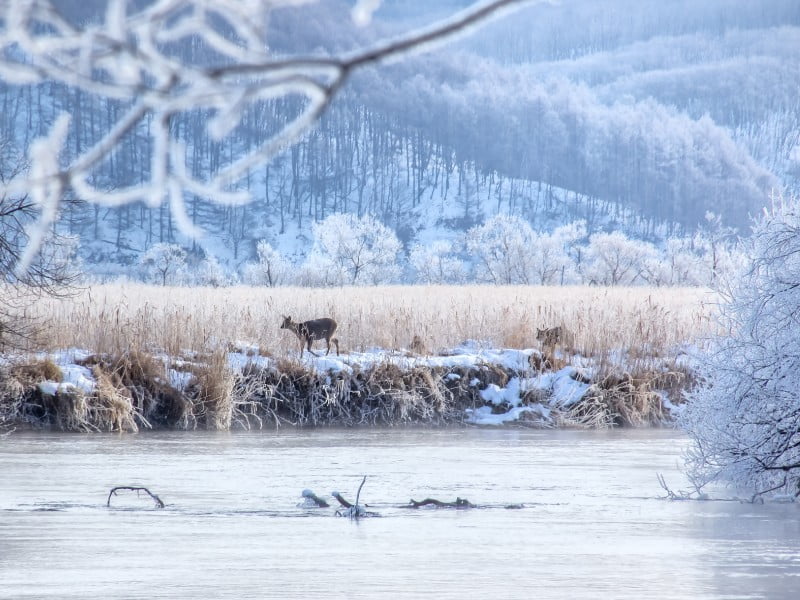
When Is The Best Time To Visit Kushiro?
Kushiro boasts diverse attractions that shine in different seasons. From its serene marshlands to its vibrant cultural events, there’s something for every traveler. But when is the perfect time to visit? Let’s delve into the details, examining Kushiro across the four seasons:
Spring (March to May)
Advantages:
- Blooming Beauty: As the chill of winter recedes, Kushiro comes alive with cherry blossoms and other spring flowers. Parks and streets are adorned in soft pinks and whites, creating a picturesque setting.
- Milder Temperatures: The weather starts warming up, making it a pleasant time for outdoor activities and sightseeing.
- Birdwatching: Spring sees a surge in migratory birds. For enthusiasts, the marshlands offer a spectacle.
Considerations:
- Fluctuating Weather: Early spring can still be chilly, and occasional showers are common. Packing layers is advisable.
Summer (June to August)
Advantages:
- Warm Weather: Summer is the warmest period, ideal for exploring the outdoors, including national parks and coastal regions.
- Outdoor Activities: From canoeing in the Kushiro wetlands to hiking trails, summer is the best time for outdoor adventures.
- Cultural Festivals: Summer hosts several festivals in Kushiro, providing insights into local traditions and celebrations.
Considerations:
- Rainfall: June can be the rainiest month due to the Tsuyu (rainy season). It’s wise to carry an umbrella or raincoat.
Autumn (September to November)
Advantages:
- Fall Foliage: Kushiro, like much of Hokkaido, is renowned for its mesmerizing autumn colors. The landscape turns into hues of red, orange, and gold, especially in areas like Lake Akan.
- Crisp Climate: The temperatures are cool and comfortable, making it a pleasant time for sightseeing and outdoor activities.
- Seafood Delights: Autumn is a season of harvest, and seafood, especially in Kushiro, is at its best. Enjoy dishes made from freshly caught produce.
Considerations:
- Popular Time: Given the allure of the autumn foliage, certain spots can become crowded, especially during weekends.
Winter (December to February)
Advantages:
- Snowy Wonderland: Kushiro is blanketed in snow, turning it into a winter wonderland. The city offers a unique charm during this season.
- Wildlife: Winter is the best time to witness the majestic red-crowned cranes in the Kushiro wetlands, making it a must-visit for nature and bird enthusiasts.
- Winter Activities: While Kushiro isn’t a ski-resort town, nearby regions offer skiing and snowboarding opportunities.
Considerations:
- Cold Temperatures: Winters in Kushiro can be cold, often dipping below freezing. Adequate winter clothing is essential.
- Limited Daylight: Days are shorter during winter, so planning activities might require some adjustment.
The best time to visit Kushiro truly depends on your interests:
- For floral displays, spring is your season.
- If you’re keen on outdoor activities and festivals, summer beckons.
- For breathtaking fall colors and seafood, autumn is unbeatable.
- To experience Kushiro’s snowy charm and wildlife, winter is the way to go.
As with any travel, checking the local calendar for events, understanding weather predictions, and considering your personal preferences will help you choose the perfect time for your Kushiro journey. Whatever the season, Kushiro promises a memorable experience.
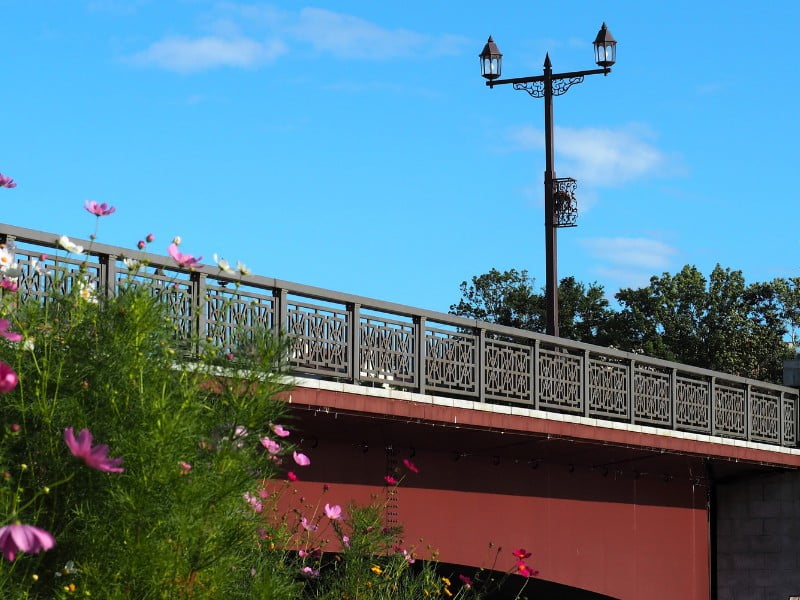

Where To Visit After Your Trip To Kushiro?
Having immersed yourself in the serene beauty of Kushiro, it’s natural to wonder where to head next in order to further unravel the tapestry of Japan’s diverse landscape and rich culture. The country offers a plethora of destinations, each with its unique charm. Here are some destinations you can consider after your sojourn in Kushiro:
source: Nomadic Samuel and That Backpacker via Samuel and Audrey on YouTube
Sapporo:
Overview: The capital of Hokkaido, Sapporo is a bustling city that offers a harmonious blend of urban sophistication and natural beauty.
Key Attractions:
- Odori Park: A massive park dividing the city into north and south. It is beautiful year-round and hosts various events, including the famous Sapporo Snow Festival.
- Historic Village of Hokkaido: A large open-air museum that showcases the historical buildings of the region.
- Sapporo Beer Museum: Dive into the history of beer-making in Japan and sample some brews.
source: Nomadic Samuel and That Backpacker from Samuel and Audrey YouTube channel
Otaru:
Overview: A harbor town near Sapporo, Otaru is known for its preserved canals, glassworks, and historic buildings.
Key Attractions:
- Otaru Canal: A picturesque area lined with brick warehouses turned into shops, museums, and restaurants.
- Glasswork Shops: Otaru is renowned for its glass craftsmanship. You can even attend workshops and craft your own glassware.
source: Nomadic Samuel and That Backpacker on Samuel and Audrey YouTube channel
Hakodate:
Overview: Located at the southernmost tip of Hokkaido, Hakodate is famous for its night views, historical architecture, and seafood.
Key Attractions:
- Mount Hakodate: Offers stunning panoramic views of the city, especially at night.
- Goryokaku: A star-shaped fortress which turns into a popular cherry blossom spot in spring.
- Morning Market: A lively spot to enjoy fresh seafood breakfasts.
Akan National Park:
Overview: A little further from Kushiro, but definitely worth the trip, this national park is home to stunning lakes, mountains, and the indigenous Ainu culture.
Key Attractions:
- Lake Mashu: Known for its clarity and beautiful blue hue.
- Lake Akan: Famous for “marimo”, unique spherical green algae.
- Ainu Kotan: A small Ainu village where you can experience indigenous culture and crafts.
Asahikawa:
Overview: The second-largest city in Hokkaido, known for its zoo, ramen, and sake.
Key Attractions:
- Asahiyama Zoo: Renowned for its unique exhibits and close-up viewing experiences of animals.
- Otokoyama Sake Brewery: Offers tours and sake tasting.
source: Nomadic Samuel and That Backpacker – Samuel and Audrey YouTube channel
Noboribetsu:
Overview: This onsen (hot spring) town is Hokkaido’s most famous hot spring resort, offering relaxation and a gateway to Hell Valley, a spectacular geothermal site.
Key Attractions:
- Jigokudani (Hell Valley): A valley with hot steam vents, sulfurous streams, and volcanic activity.
- Onsen Resorts: Immerse yourself in rejuvenating hot spring baths.
Biei and Furano:
Overview: These towns in central Hokkaido are celebrated for their picturesque rolling hills, flower fields, and lavender farms.
Key Attractions:
- Flower Fields: Depending on the season, see fields of lavender, poppies, lilies, and more.
- Blue Pond: A mesmerizing blue-hued pond in Biei that’s worth a visit.
Tokyo:
Overview: Japan’s capital city, Tokyo, is a dynamic metropolis that seamlessly blends ancient traditions with futuristic technology.
Key Attractions:
- Asakusa Senso-ji Temple: A historic temple in the heart of the city, surrounded by traditional shops and eateries.
- Shibuya Crossing: The world-famous pedestrian crossing that symbolizes Tokyo’s urban energy.
- Tsukiji Outer Market: Sample fresh seafood and culinary delights.
Kyoto:
Overview: Known for its traditional architecture, temples, shrines, and beautiful gardens, Kyoto is a cultural treasure trove.
Key Attractions:
- Kinkaku-ji (Golden Pavilion): A Zen Buddhist temple covered in gold leaf.
- Fushimi Inari Shrine: Famous for its thousands of vibrant torii gates.
- Gion District: A historic area known for its preserved machiya (traditional wooden townhouses) and geisha culture.
Osaka:
Overview: A modern city with a vibrant food scene, entertainment options, and historic landmarks.
Key Attractions:
- Osaka Castle: A majestic castle surrounded by lush grounds and moats.
- Dotonbori: A bustling entertainment district known for its neon lights and diverse dining options.
Hiroshima and Miyajima:
Overview: Hiroshima, infamous for its tragic history, has transformed into a symbol of peace. Nearby Miyajima Island is known for its iconic torii gate in the water.
Key Attractions:
- Hiroshima Peace Memorial Park: A solemn place dedicated to the memory of the atomic bombing.
- Miyajima’s Floating Torii: A UNESCO World Heritage Site that appears to float on the water during high tide.
Nara:
Overview: Nara is home to some of Japan’s oldest and largest temples, as well as a population of freely roaming deer.
Key Attractions:
- Todai-ji Temple: Houses the world’s largest bronze statue of the Buddha.
- Nara Park: Home to hundreds of deer, considered sacred in Shinto belief.
Kanazawa:
Overview: A city known for its well-preserved Edo-period districts, contemporary art museums, and regional handicrafts.
Key Attractions:
- Kenrokuen Garden: One of Japan’s three most beautiful landscape gardens.
- Nagamachi Samurai District: Stroll through narrow streets lined with samurai residences.
Nagasaki:
Overview: Nagasaki is rich in history, with its blend of East and West influences due to its role as a former trading port.
Key Attractions:
- Nagasaki Peace Park: A place to reflect on the city’s history and the consequences of war.
- Glover Garden: A collection of Western-style mansions overlooking the city.
source: Nomadic Samuel and That Backpacker – Samuel and Audrey YT channel
Takayama:
Overview: This charming mountain town is famous for its well-preserved Edo-period streets and festivals.
Key Attractions:
- Takayama Old Town: Explore traditional wooden buildings and local crafts.
- Takayama Festival: If timing aligns, experience this vibrant festival featuring ornate floats and traditional performances.
Okinawa:
Overview: The Okinawa Prefecture is a tropical paradise known for its stunning beaches, rich culture, and unique history.
Key Attractions:
- Shuri Castle: A UNESCO World Heritage Site that was once the royal palace of the Ryukyu Kingdom.
- Kokusai Street: A bustling street in Naha City with shops, restaurants, and a vibrant atmosphere.
- Churaumi Aquarium: One of the world’s largest aquariums, showcasing Okinawa’s marine life.
Miyakojima:
Overview: An island in the Okinawa Prefecture, Miyakojima is known for its beautiful beaches and crystal-clear waters.
Key Attractions:
- Sunayama Beach: A stunning white sandy beach known for its unique rock formations.
- Cape Higashi-Hennazaki: Offers breathtaking panoramic views of the ocean and coastline.
Ishigaki and Yaeyama Islands:
Overview: Part of the Yaeyama Islands, Ishigaki is a tropical getaway known for its coral reefs and natural beauty.
Key Attractions:
- Kabira Bay: A picturesque bay with emerald green waters and coral reefs.
- Taketomi Island: Known for its preserved traditional Ryukyu village and beautiful beaches.
Kagoshima:
Overview: Located on the island of Kyushu, Kagoshima offers a blend of history, stunning landscapes, and active volcanoes.
Key Attractions:
- Sakurajima: An active volcano that you can visit via a short ferry ride.
- Sengan-en Garden: A beautiful Japanese garden with views of Sakurajima and Kagoshima Bay.
Hiroshima and Beyond:
Overview: While Hiroshima itself offers significant historical and cultural attractions, you can also explore nearby islands.
Key Attractions:
- Itsukushima Shrine on Miyajima Island: Known for its iconic torii gate and stunning views.
- Iwakuni: Visit Kintai-kyo Bridge and explore Iwakuni Castle.
Hokkaido’s Eastern Regions:
Overview: While you’ve already explored Kushiro, Hokkaido’s eastern regions offer more natural beauty and unique experiences.
Key Attractions:
- Shiretoko Peninsula: A UNESCO World Heritage Site with untouched nature and wildlife.
- Furano and Biei: Visit lavender and flower fields, and enjoy the picturesque landscapes.
Tips for Moving Between Destinations:
- Rail: The JR Hokkaido train network is extensive and efficient. Consider getting a JR Hokkaido Rail Pass if you plan to visit multiple destinations.
- Car: Renting a car gives you flexibility, especially if you’re keen to explore the more remote regions of Hokkaido.
Hokkaido, with its expansive landscapes, distinct seasons, and rich culture, offers numerous destinations that complement a visit to Kushiro. Whether you’re seeking more natural beauty, a deep dive into history, or urban experiences, there’s a post-Kushiro journey waiting to unfold.

Essential Kushiro Japan Travel FAQ: Planning, Wildlife, Seasons & Practical Tips
How many days do you really need in Kushiro?
If you only have time for a quick taste, one full day lets you hit the marsh observatory, Washo Market for kaisendon, Nusamai Bridge at sunset, and a robata dinner. But to actually feel the rhythm of the city, I’d aim for 3 days: one focused on the wetlands and cranes, one on Lake Akan / Akan Mashu National Park, and one on food, museums, and coastal walks. With 4 days you can start layering in day trips like Tsurui Village or Lake Mashu without feeling rushed.
Is Kushiro worth visiting if I’m not renting a car?
Yes. If you’re happy to follow timetables and keep things fairly relaxed, you can do a very solid Kushiro trip with trains, buses, taxis, and walking. The city sights (Washo Market, Nusamai Bridge, Fisherman’s Wharf MOO, museums) are easily done without a car, and buses connect you to places like Kushiro Shitsugen National Park and Lake Akan. Where a car really helps is stitching together multiple nature spots in one day or chasing sunrise/sunset at far-flung viewpoints in winter.
When is the best time to see red-crowned cranes around Kushiro?
Winter is the superstar season for cranes. From roughly late December through February, snow on the marshes creates that classic white backdrop and the birds gather at feeding spots, making them easier to see and photograph. You can spot cranes other times of year, but winter offers the most reliable sightings and that magical “dancing in the snow” atmosphere. Just keep in mind you’ll need proper winter gear for long periods outside with your camera.
Can I visit Kushiro as a day trip from Sapporo?
Technically yes, but I wouldn’t recommend it. The limited express train between Sapporo and Kushiro takes around four hours each way, which turns your “day trip” into a train marathon with only a small window to explore. If your time is tight, it’s far more enjoyable to spend at least one night in Kushiro, ideally two, so you’re not sprinting between the marshes, markets, and waterfront. Kushiro feels like a city that rewards slow travel.
Where is the best area to stay in Kushiro for first-time visitors?
For most visitors, staying near Kushiro Station or along the Kushiro River works best. Around the station you’re close to trains, buses, and Washo Market, which is handy for early seafood breakfasts and day trips. Along the riverfront (near Fisherman’s Wharf MOO and Nusamai Bridge), hotels come with sunset views and easy evening strolls built in. If you’re more focused on onsen and nature, basing yourself at Lake Akan for part of your stay is a lovely complement to a night or two in the city.
What local foods should I prioritize in Kushiro?
If you remember just three words, make them “seafood, ramen, robata.” Start with a DIY kaisendon at Washo Market where you build your own rice bowl from market stalls. Seek out Kushiro ramen with its soy-based broth and wavy noodles, which is quite different from the heavier miso styles elsewhere in Hokkaido. And save at least one night for robatayaki: fresh fish, shellfish, and vegetables grilled over charcoal right in front of you. Add zangi (Hokkaido fried chicken), Pacific saury in season, and a local sake, and you’ve basically eaten Kushiro.
How cold does Kushiro get in winter and what should I pack?
Winter here is properly cold rather than mildly chilly. Sub-zero temperatures, icy sidewalks, and wind off the water are all part of the experience, especially if you’re heading to observation decks or standing still to photograph cranes. Think in layers: thermal base layers, a warm mid-layer, and a waterproof, windproof outer jacket. Add insulated boots with good grip, hat, scarf, and proper gloves (plus thin liner gloves if you’re using a camera). If you’re prepared, the cold becomes invigorating instead of punishing.
Is Kushiro a good destination for families with kids?
Very much so, especially if your kids like animals and being outside. The wetlands, cranes, and coastal scenery give them space to run around, while places like the Kushiro Children’s Museum and the zoo add hands-on, kid-friendly stops. Boat rides, easy boardwalk trails, and winter activities like ice fishing also tend to be huge hits. The only thing to watch is winter weather with very young children—build in indoor breaks and keep days shorter when it’s brutally cold.
Will I struggle with the language barrier in Kushiro?
English isn’t as widely spoken here as in bigger hubs like Tokyo or Sapporo, but it’s manageable with a bit of preparation. Stations, major attractions, and some hotels often have basic English signage, and staff are usually patient and kind even if they don’t speak much English. I’d keep a translation app handy, screenshot key bus timetables, and save your accommodation’s name/address in Japanese on your phone. Smile, be patient, and embrace a bit of charades—you’ll be fine.
Is Kushiro expensive compared to other parts of Japan?
Overall, Kushiro feels slightly gentler on the wallet than Tokyo, Kyoto, or even Sapporo. Accommodation offers good value in the mid-range and business hotel categories, and local seafood meals can be surprisingly affordable considering the quality. Your big costs will be transport (especially if you’re stringing together day trips) and any guided tours. If you’re happy with business hotels, market meals, and public transport, Kushiro can be very budget-friendly for Japan.
Can I combine Kushiro with Lake Akan and Akan Mashu National Park without changing hotels?
You can, but it depends on how much commuting you’re willing to accept. It’s absolutely possible to base in Kushiro and visit Lake Akan or parts of Akan Mashu National Park as day trips using buses or a rental car. However, staying at least one night in a lakeside onsen ryokan lets you soak in hot springs, enjoy a multi-course dinner, and experience the area after the day-trippers leave. I like the hybrid approach: a couple of nights in Kushiro plus one or two out by the lake.
What are the best things to do in Kushiro on a rainy or foggy day?
Rain and fog are part of Kushiro’s personality, so it’s good to have a backup plan. Indoor options include the city museum, art museum, Fisherman’s Wharf MOO, Washo Market, cafés, and onsen baths. The harbor and riverfront can actually look atmospheric in misty conditions, so short walks with a good rain jacket are still rewarding. This is also the perfect time to linger over a long robata dinner or ramen lunch instead of rushing from sight to sight.
Is Kushiro safe for solo female travellers?
Yes. Kushiro generally feels very safe, and Japan as a whole has low violent crime rates. As a solo female traveller you’ll see other women out and about at markets, on public transport, and in izakayas, especially in earlier evening hours. The usual common-sense precautions still apply: stick to well-lit streets at night, watch your drinks, and trust your instincts. If you prefer quieter settings after dark, choose accommodation near the station or river so you’re walking shorter distances.
Do I need to book tours and restaurants in advance in Kushiro?
Outside of peak seasons and major holidays, you can often walk into many local restaurants, especially at lunch. That said, I’d still book ahead for popular robata spots on weekends or if you have a specific restaurant in mind. For tours—canoe trips, wildlife excursions, winter photography outings, or guided day trips—it’s much better to reserve in advance, particularly in winter crane season and summer holidays. Pre-booking also gives you English-language confirmations and clear meeting points, which keeps your days smoother.
Kushiro Travel Guide: Final Thoughts
As you’ve journeyed through this comprehensive guide to Kushiro, you’ve explored a city that beautifully blends natural wonders, cultural heritage, and modern amenities. From its iconic marshlands to its vibrant festivals, Kushiro offers a truly unique experience that captures the essence of Hokkaido and Japan as a whole. Let’s reflect on your virtual journey and summarize the key takeaways:
Captivating Natural Beauty:
Kushiro’s hallmark is undoubtedly its expansive marshlands. The Kushiro Marsh is a haven for birdwatchers, nature enthusiasts, and photographers. Witnessing the graceful dance of red-crowned cranes against the backdrop of the marsh is an unforgettable experience. The region’s lakes, rivers, and forests further highlight the abundant natural beauty that Kushiro proudly boasts.
Rich Cultural Experiences:
The city’s heritage is deeply rooted in Ainu culture, the indigenous people of Hokkaido. Embrace this heritage through museums, workshops, and events that showcase Ainu traditions, arts, and crafts. Whether it’s participating in festivals, exploring historical sites, or interacting with locals, you’ll gain a meaningful understanding of Kushiro’s cultural tapestry.
Culinary Delights:
Kushiro’s cuisine reflects its coastal location. From succulent seafood dishes to traditional Ainu fare, every meal is an opportunity to savor Hokkaido’s flavors. Don’t miss the chance to enjoy dishes made from locally caught seafood, and make sure to try local specialties like robatayaki and Marimo sweets.
Year-Round Attractions:
Kushiro’s charm transcends seasons. Whether it’s cherry blossoms in spring, outdoor adventures in summer, fall foliage, or the serene snowy landscapes of winter, every time of year offers something special. The festivals and events peppered throughout the year ensure that your visit is punctuated with cultural vibrancy.
Practical Tips:
- Safety and Courtesy: Kushiro maintains the same high safety standards found throughout Japan. The courteous nature of locals contributes to a warm and comfortable atmosphere.
- Transportation: Whether you’re navigating the city’s public transport system, renting a car, or even taking a scenic train ride, Kushiro offers multiple ways to get around.
- Accommodations: Choose from a variety of accommodations, including hotels, guesthouses, and hostels, catering to various budgets and preferences.
A Journey of Discovery:
Kushiro beckons travelers to explore its marshes, uncover its history, indulge in its culinary delights, and immerse themselves in local traditions. As you prepare for your own adventure to Kushiro, remember to carry a sense of curiosity and appreciation for the city’s treasures. Every step you take in Kushiro is an opportunity to connect with nature, culture, and the warmth of its people.
So whether you’re planning a future trip or simply seeking to enrich your understanding of this fascinating destination, let the spirit of Kushiro stay with you, reminding you of the wonders that await in every corner of this enchanting city. Safe travels and happy exploring!
